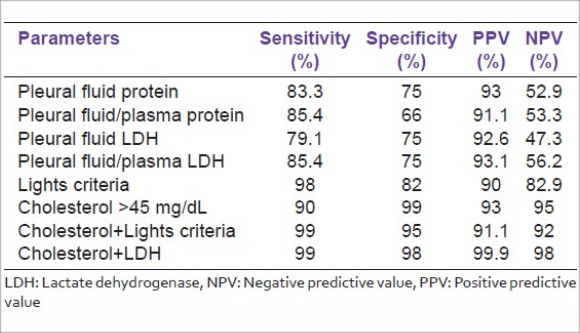
What is a pleural fluid analysis?
Pleural fluid is a liquid that is located between the layers of the pleura. The pleura is a two-layer membrane that covers the lungs and lines the chest cavity. The area that contains pleural fluid is known as the pleural space. Normally, there is a small amount of pleural fluid in the pleural space.The fluid keeps the pleura moist and reduces friction between the membranes when you breathe.
Sometimes too much fluid builds up in the pleural space. This is known as pleural effusion. Pleural effusion prevents the lungs from fully inflating, making it hard to breathe. A pleural fluid analysis is a group of tests that look for the cause of pleural effusion.
Other names: pleural fluid aspiration.
What is it used for?
A pleural fluid analysis is used to find the cause of pleural effusion. There are two main types of pleural effusion:- Transudate, which happens when there is an imbalance of pressure in certain blood vessels. This causes extra fluid to leak into the pleural space. Transudate pleural effusion is most often caused by heart failure or cirrhosis.
- Exudate, which happens when there is an injury or inflammation of the pleura. This can make excess fluid leak out of certain blood vessels. Exudate pleural effusion has many causes. These include infections such as pneumonia, cancer, kidney disease, and autoimmune diseases. It commonly affects only one side of the chest.
To help figure out which type of pleural effusion you have, your health care provider may use a method known as Light's criteria. Light's criteria is a calculation that compares some of the findings of your pleural fluid analysis with the results of one or more protein blood tests.
It's important to find out which type of pleural effusion you have, so you can get the right treatment.
Why do I need a pleural fluid analysis?
You may need this test if you have symptoms of pleural effusion. These include:Some people with pleural effusion don't have symptoms right away. But your provider may order this test if you've had a chest x-ray for another reason, and it shows signs of pleural effusion.
What happens during a pleural fluid analysis?
Your health care provider will need to remove some pleural fluid from your pleural space. This is done through a procedure called thoracentesis. The procedure may be done in a doctor's office or hospital. During the procedure:- You will need to take off most of your clothes and then put on a paper or cloth gown to cover yourself.
- You will sit on a hospital bed or chair, with your arms resting on a padded table. This puts your body in the right position for the procedure.
- Your provider will clean an area on your back with an antiseptic solution.
- Your provider will inject a numbing medicine into your skin, so you won't feel any pain during the procedure.
- Once the area is completely numb, your provider will insert a needle in your back between the ribs. The needle will go into the pleural space. Your provider may use ultrasound imaging to help find the best spot to insert the needle.
- You may feel some pressure as the needle goes in.
- Your provider will withdraw fluid into the needle.
- You may be asked to hold your breath or breathe out deeply at certain times during the procedure.
- When enough fluid has been removed, the needle will be taken out and the procedure area will be bandaged.
Blood tests for certain proteins are used to calculate Light's criteria. So you may also get a blood test.
Will I need to do anything to prepare for the test?
You don't need any special preparations for a thoracentesis or a blood test. But your provider may order a chest x-ray before the procedure.Are there any risks to the test?
Thoracentesis is a generally safe procedure. Risks are usually minor and may include pain and bleeding at the procedure site.Serious complications are uncommon, and may include a collapsed lung or pulmonary edema, a condition in which too much pleural fluid is removed. Your provider may order a chest x-ray after the procedure to check for complications.
What do the results mean?
Your results can show whether you have a transudate or exudate type of pleural effusion. Transudate pleural effusions are most often caused by heart failure or cirrhosis. Exudate effusions may be caused by a number of different diseases and conditions. Once the type of pleural effusion has been determined, your provider will likely order more tests to make a specific diagnosis.If you have questions about your results, talk to your health care provider.
Is there anything else I need to know about a pleural fluid analysis?
Your pleural fluid results may be compared with other tests, including tests for glucose and for albumin, a protein made by the liver. The comparisons may be used as part of Light's criteria to help figure out what kind of pleural effusion you have.This health news has been brought to you by the publishers of Health Reviews, Tips and News Website. Visit today for great health tips and reviews.



No comments
Post a Comment